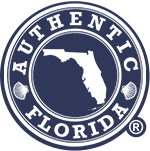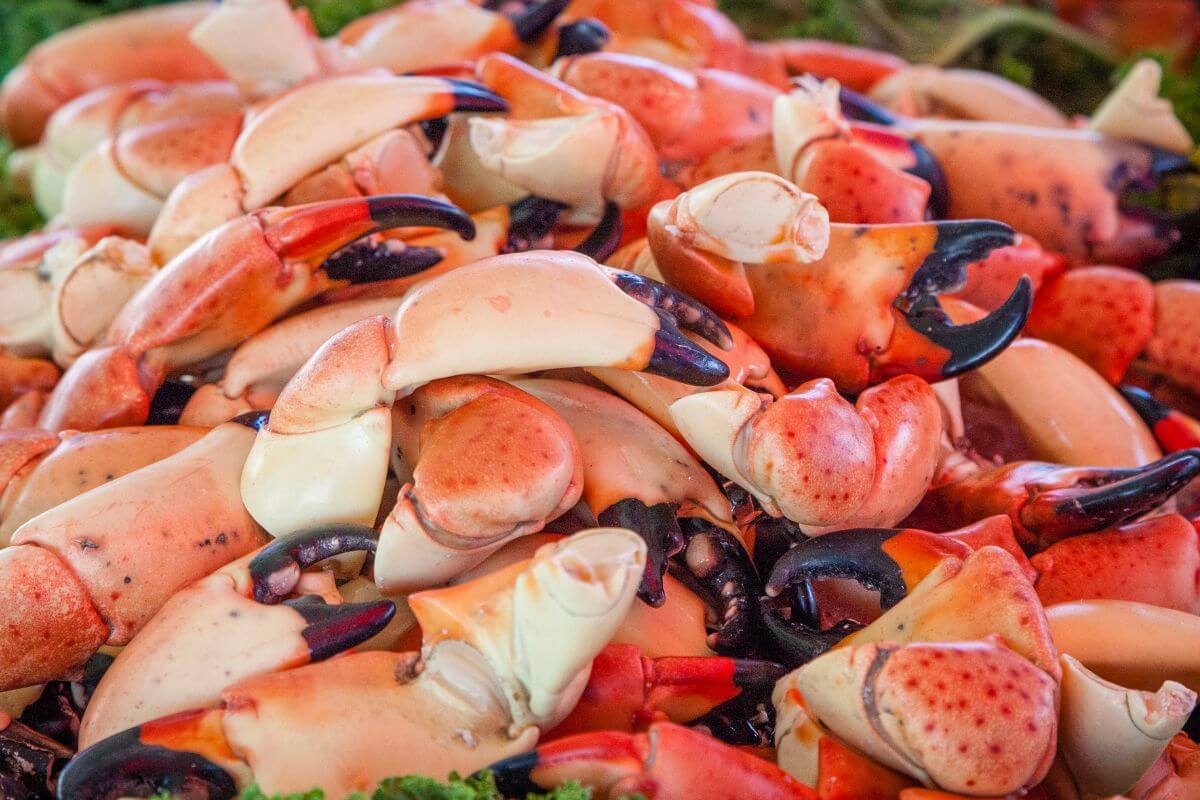Last Updated on July 20, 2023
The 2022-2023 Florida Stone Crab season is from October 15, 2022, to May 15, 2023.
There’s a lot of competition regarding everyone’s favorite foods in the Sunshine State. Fresh Florida stone crabs, key lime pie, conch fritters, Cedar Key clams, Apalachicola oysters … the list continues ad infinitum.
Let’s face it — They are all delicious!
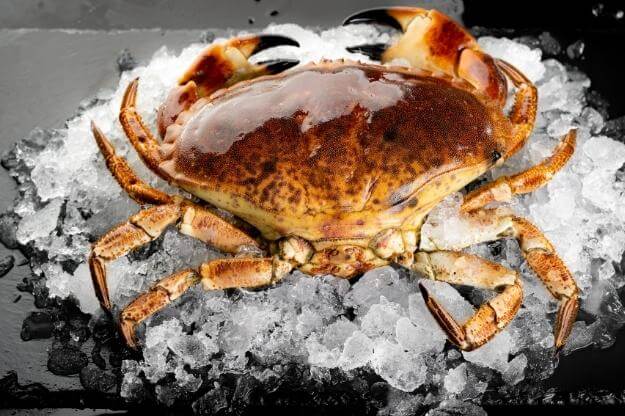
Florida Stone Crab
We want to focus on the Florida Stone Crab. Beginning October 15th, the Florida Fish and Wildlife Conservation Commission (FWC) allows recreational fishers to trap and catch stone crab claws that are at least 2 7/8 inches.
NOTE: Only claws are harvested.

To participate in recreational trapping, fishers must complete a free, online recreational stone (or blue) crab trap registration.
The online form can be found at GoOutdoorsFlorida.com.
(If you have an account, add the stone crab trap registration to your fishing license. Each person registered to trap stone crabs will have a unique trap registration number. This registration allows FWC to collect information for future harvests).
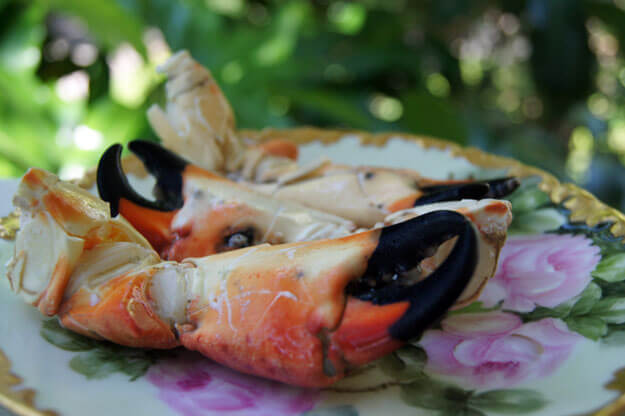
Florida Stone Crabs are an industry that contributes $30 million to the state’s economy each year. It is one of the most expensive types of seafood you can buy.
The price and value of Florida stone crab claws are steadily increasing. In addition, researchers work to ensure the crab population is healthy and bountiful while maintaining consumer demand.
Why Are Florida Stone Crabs Unique?
Ninety-nine percent of fresh stone crab claws are harvested in the state of Florida. For example, stone crab claw earnings came in second, only behind shrimp, according to the FWC.

Stone crab is unique because it is a “claw only” fishery. Stone crab claws are harvested by removing the claws from the crab and returning the live animal to the ocean.

It’s always fun comparing the standards of size between the largest female claws with the largest male claws.
How can you tell a male from a female? Remember “wide females” and “tall males” (we know, that’s not the most PC description). Female stone crabs have a wide round abdomen, while male stone crabs have a long narrow abdomen.
Similar to how lizards drop their tails when trying to escape, stone crabs drop their fresh claws voluntarily and grow them back later. NOTE: Sustainable practices assure the regenerated claw.
How does crabbing impact the crab population?
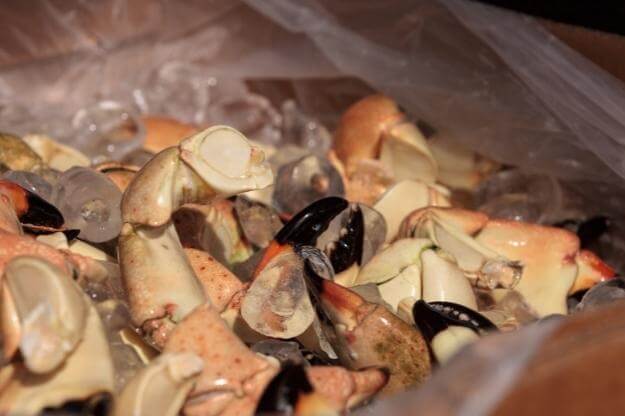
“Because they can regenerate their claws and reproduce after that, people think of them as a renewable resource,” said Katherine Rose, UF/IFAS Extension and Florida Sea Grant agent. “But recent research shows that crab claws are not regenerating at the rate we thought they were, and removal may reduce their chance of survival more than we originally thought.”
Depending on the size of the crustacean’s claw, fishers can take one or both. A recent study shows that removal impacts crabs’ behavior and potentially their chance of survival after declawing.
Hence, if you take both claws, there’s a 60% chance the crab will die before regenerating. There’s a 40% if you take one claw. Overall, 13% of them died just from being handled.

The animal’s life span averages six to eight years, and it takes about two years to regenerate a legal-sized claw. The fishery may not be as sustainable as scientists initially thought.
Learning more about the crabbing process
“Now that we know more about the impacts of taking the claws, we want to understand an earlier part of the catch process when the crabs are trapped,” said Rose. “We were curious if that time spent in the trap impacted the survival rates of the crabs once claws were taken.”

A typical commercial fishery places crab traps approximately 14 days before they pull up the trap to collect the crabs and harvest their claws.
During that time, some crabs that enter the traps early may go without food. The crabs are often concentrated in traps, which is stressful.
“The good news is that our study found that crabs fared well in the traps,” said Rose. “While this is the first study of its kind, and a small piece of the overall puzzle to better understand stone crab health in the fishery, we think it’s a good first step.”
Researchers measured nutrition indicators from the crabs’ time without access to food. Additionally, they watched their reflexes to see if their reactions measured vitality. They saw a nutritional decline.
Despite that, the crab’s reflexes were fine. This suggests that the crabs could recover from being trapped for a long time without food. This is good news for crabs too small for the claws to be removed.
There have been a lot of policy changes within the fishery. A typical Florida Stone Crab season runs from October to May.
A new law requires traps to have escape gaps to allow crabs not of legal catching size to leave the traps.
This article was inspired by a collaboration between UF/IFAS, Florida Sea Grant and the Florida Fish and Wildlife Conservation Commission.
For more information, please contact: Tory Moore, 352-273-3566; email address: [email protected].
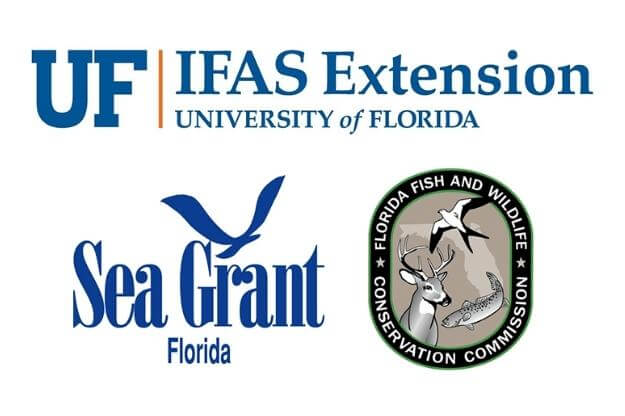
About the University of Florida Institute of Food and Agricultural Sciences:
The mission of the University of Florida Institute of Food and Agricultural Sciences (UF/IFAS) is to develop knowledge relevant to agricultural, human and natural resources and to make that knowledge available to sustain and enhance the quality of human life.
With more than a dozen research facilities, 67 county Extension offices, and award-winning students and faculty in the UF College of Agricultural and Life Sciences, UF/IFAS brings science-based solutions to the state’s agricultural and natural resources industries and all Florida residents. ifas.ufl.edu
About Florida Sea Grant:
The Florida Sea Grant program, hosted at UF/IFAS, is a university-based program that supports research, education and Extension to conserve coastal resources and enhance economic opportunities for the people of Florida.
In addition to UF/IFAS, the program is a partnership between Florida universities, the National Oceanic and Atmospheric Administration and county governments. flseagrant.org
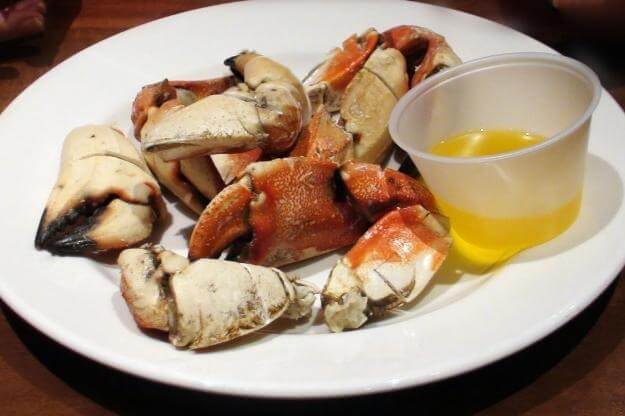
Our recommendations for restaurants around the state to get the best Florida stone crab.
- Joe’s Stone Crab, Miami Beach
- Grimm’s Stone Crab, Everglades City
- Triad Seafood Cafe, Everglades City
- Kelly’s Landing, Fort Lauderdale
- Cod & Capers Seafood, North Palm Beach
- Big Fin Seafood Kitchen, Orlando
- Frenchy’s Cafe, Clearwater
- Key Largo Fisheries
- The Whale’s Rib Raw Bar, Deerfield Beach
- Truluck’s, Multiple Locations
- My Ceviche, Coral Gables
- Half Shell Raw Bar, Key West
If we missed any of your favorite places, let us know in the comments.
Here are some other Authentic Florida articles you should check out:
